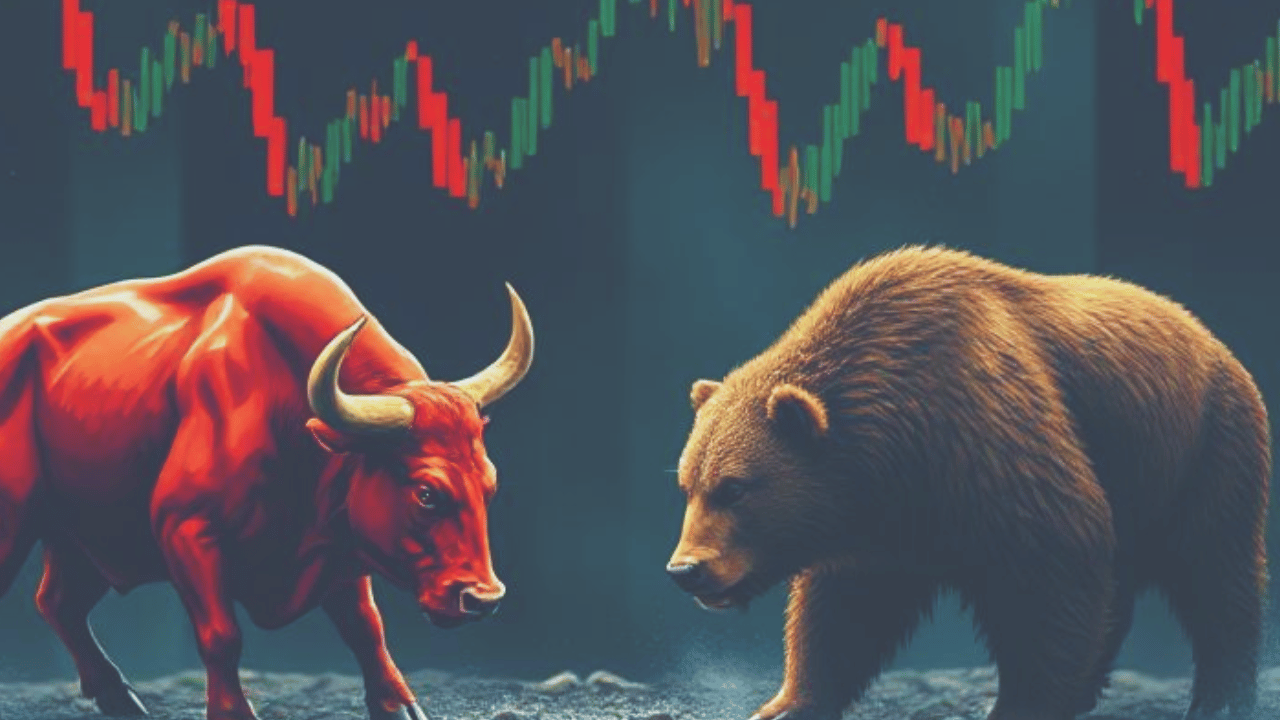The Difference Between a Bull and Bear Market: If you are interested in knowing about the Bull and Bear Market then you must know about the market trends like ups and downs are very normal for it. Knowing about the bull and bear market is very important for traders, investors, and anyone who is involved in finances. These terms describe the direction in which prices move in the market. In order to avoid losses investors and traders must know when the market is in a bull or bear phase to make better investment decisions to prevent losses.
In this article, we will explain what is bull and bear markets and how investors and traders can get to know about which phase is right now.
What is a Bull Market? Definition and Key Characteristics
A bull market is the best and perfect period for investors and traders because it’s a golden time for investment. When for a long period stock prices continuously rise over a long time is known as a bull market. If stock prices increase by 20% or more from a recent low we call it the bullish market.
In a bullish market, companies make significant profits, investors stay confident, economy gets strong.
You may think about how long the bull market stays if this happens-
Well, it’s not certain or fixed but as per market history the bull market can last for months or even years and it provides really great opportunities for investors.
Characteristics of a Bull Market
- Stock Price Rise: Price increment seen in the assets and stocks in a bull market.
- Strong Economic Growth: The economy expands, businesses generate great profits, and consumer spending increases in this period.
- High Investor Confidence: People feel great about the future of the market and invest more and more money.
- Low Interest Rate: In a bull market, central banks maintain low interest rates to encourage borrowing and investment.
- Lower Unemployment Rates: When the bull market starts, new job opportunities arise in the market.
- High Market Liquidity: People invest more money in the market which makes it easier to buy and sell stock.
Causes of Bull Market:
- Low Interest Rates: Cheaper interest rates enable businesses and people to invest more in the market.
- Technical Innovation: Advancements create more business options, and it drives stock prices upward.
- Consumer Spending Rise: When the purchasing power increases it leads to higher corporate revenues and as well as stock appreciation.
- Government Policies: If the tax policies are favorable, they support market expansion because of the stimulus package and deregulation.
Historical Examples of Bull Markets
- Post-World War II Boom (1949-1966): Post-World War II economy expanded and it led to one of the longest bull markets.
- Dot-Com Boom (1990): A significant market surge was seen after the rise of internet-based companies.
- Post 2008 financial crisis (2009-2020): Post 2008 financial crisis we saw a great bull market for many years, for more than a decade.
- Post Covid Recover (2020-2021): Government rules and decrement in interest rates the stock market recovered quickly.
What is a Bear Market? Definition and Key Characteristics
If the stock prices drop by more than 20% from a recent high it is known as a bear market. In a bear market, the sentiment of investors turns down and the economy goes down. The bear market could be due to any reason such as financial crises, economic recession, and any uncertainties globally.
In a bear market, due to panic among investors, they sell their stocks, further downwards in stock seen.
Characteristics of Bear Market:
- Decline Stock Prices: In the period of a bear market, stock and other assets lose value.
- Low Investor Confidence: Fear in people makes them lose and withdraw investments.
- Higher Interest Rates: In a bear market, central banks may increase the interest rates, and in such a situation the investors get discouraged and don’t borrow and spend.
- Rise in Unemployment Rates: We see layoffs in the bear market because companies cut costs by doing so.
- Weak Economy: When it is a bear market businesses struggle to generate profits and economic growth gets slow.
- Reduce Profits: Businesses report declining in revenue and lowering in the valuation of stock.
Causes of Bear Market:
- High Inflation: When costs are raised people don’t spend much which affects businesses and stock prices.
- Recession: The decrement in the economy reduces the business profits and investor’s confidence.
- Financial Crises: Debt crises and banking failures lead to the spread of panic in the market.
- Global Events: Things like pandemics, wars, and political instability affect the market badly and trigger market downturns.
- High Interest Rates: High interest rates reduce investments as they make borrowing expensive.
- Panic Selling: Fear or panic selling also negatively affects the market.
Historical Examples of Bear Markets:
- The great depression (1929-1932): In this period a sudden and significant drop in stock prices caused so many economic problems. Due to this, investors lost their money and faced losses. Many companies struggled or shout down.
- 2008 Financial Crisis: The market collapse triggered the recession globally.
- COVID-19 Crash: The COVID-19 pandemic caused a rapid market decline in the COVID-19 duration.
Conclusion
It is very important for the investors to know about the bull and bear market in order to make smart decisions. The bull market is a golden period for investors which offers growth and profitability while the bear market needs caution in investment.
For investors, knowing about the market and understanding its nature can help them to generate profit and skip losses. It is true that no one can predict the market with certainty but staying informed and up to date can help investors and businesses in both conditions.
